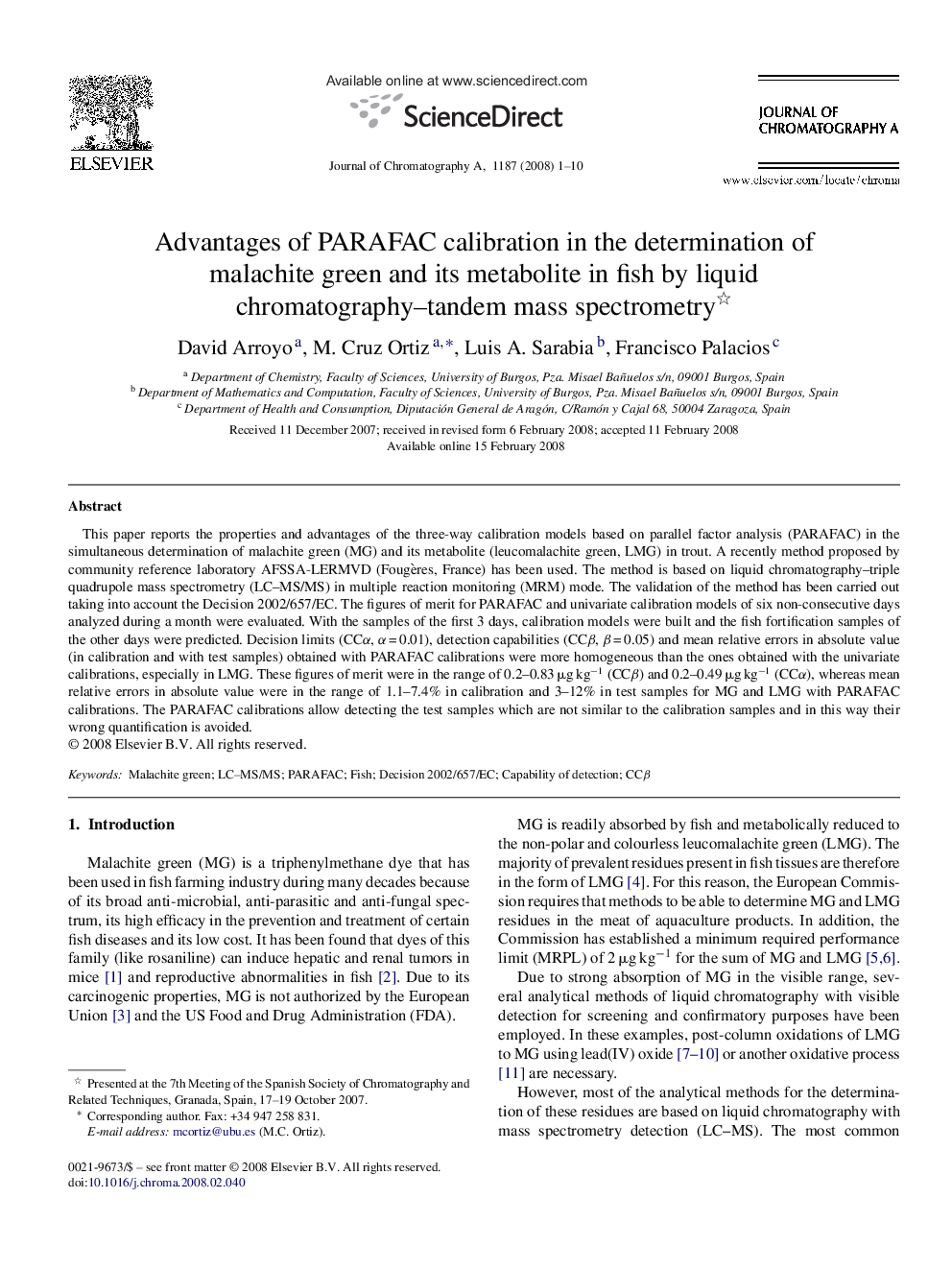| Article ID | Journal | Published Year | Pages | File Type |
|---|---|---|---|---|
| 1207285 | Journal of Chromatography A | 2008 | 10 Pages |
This paper reports the properties and advantages of the three-way calibration models based on parallel factor analysis (PARAFAC) in the simultaneous determination of malachite green (MG) and its metabolite (leucomalachite green, LMG) in trout. A recently method proposed by community reference laboratory AFSSA-LERMVD (Fougères, France) has been used. The method is based on liquid chromatography–triple quadrupole mass spectrometry (LC–MS/MS) in multiple reaction monitoring (MRM) mode. The validation of the method has been carried out taking into account the Decision 2002/657/EC. The figures of merit for PARAFAC and univariate calibration models of six non-consecutive days analyzed during a month were evaluated. With the samples of the first 3 days, calibration models were built and the fish fortification samples of the other days were predicted. Decision limits (CCα, α = 0.01), detection capabilities (CCβ, β = 0.05) and mean relative errors in absolute value (in calibration and with test samples) obtained with PARAFAC calibrations were more homogeneous than the ones obtained with the univariate calibrations, especially in LMG. These figures of merit were in the range of 0.2–0.83 μg kg−1 (CCβ) and 0.2–0.49 μg kg−1 (CCα), whereas mean relative errors in absolute value were in the range of 1.1–7.4% in calibration and 3–12% in test samples for MG and LMG with PARAFAC calibrations. The PARAFAC calibrations allow detecting the test samples which are not similar to the calibration samples and in this way their wrong quantification is avoided.
